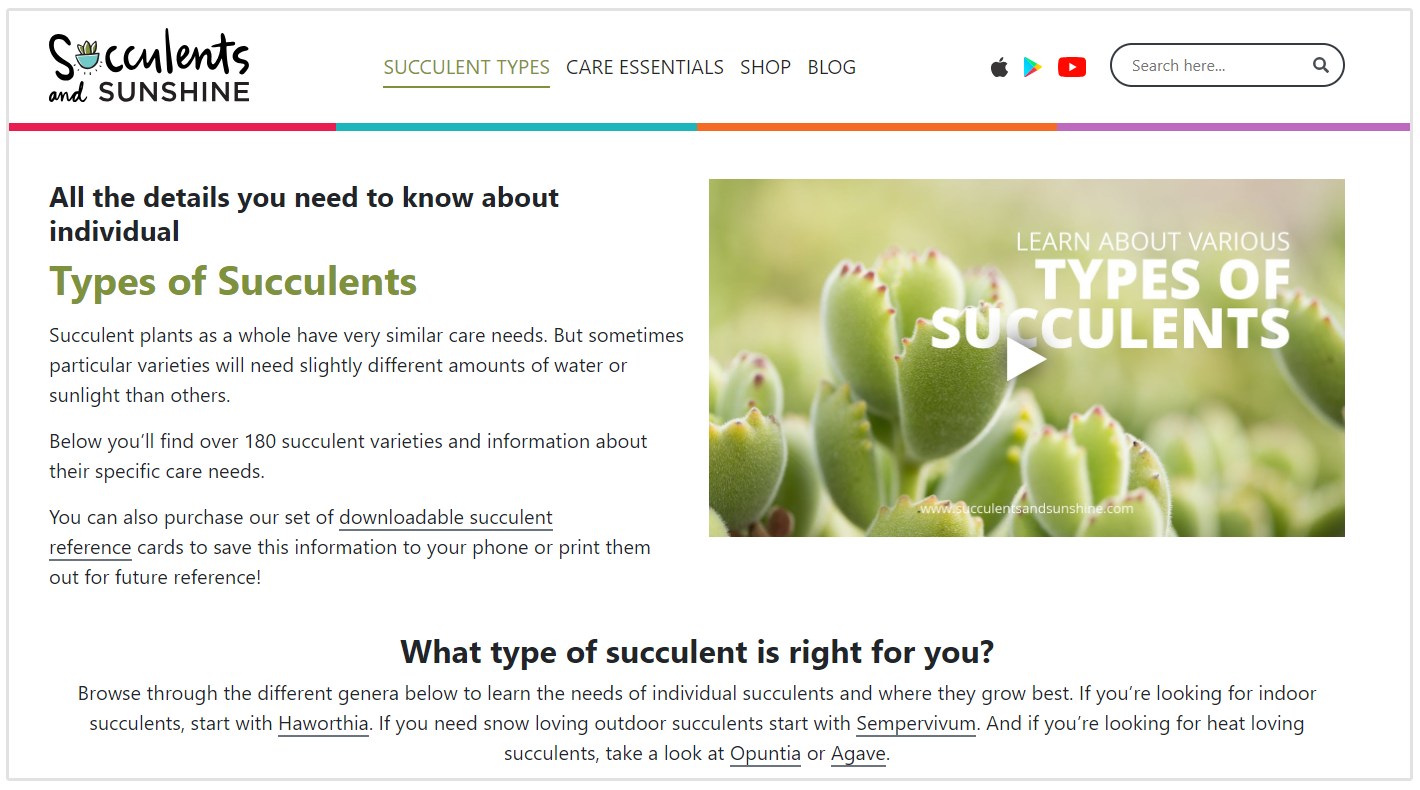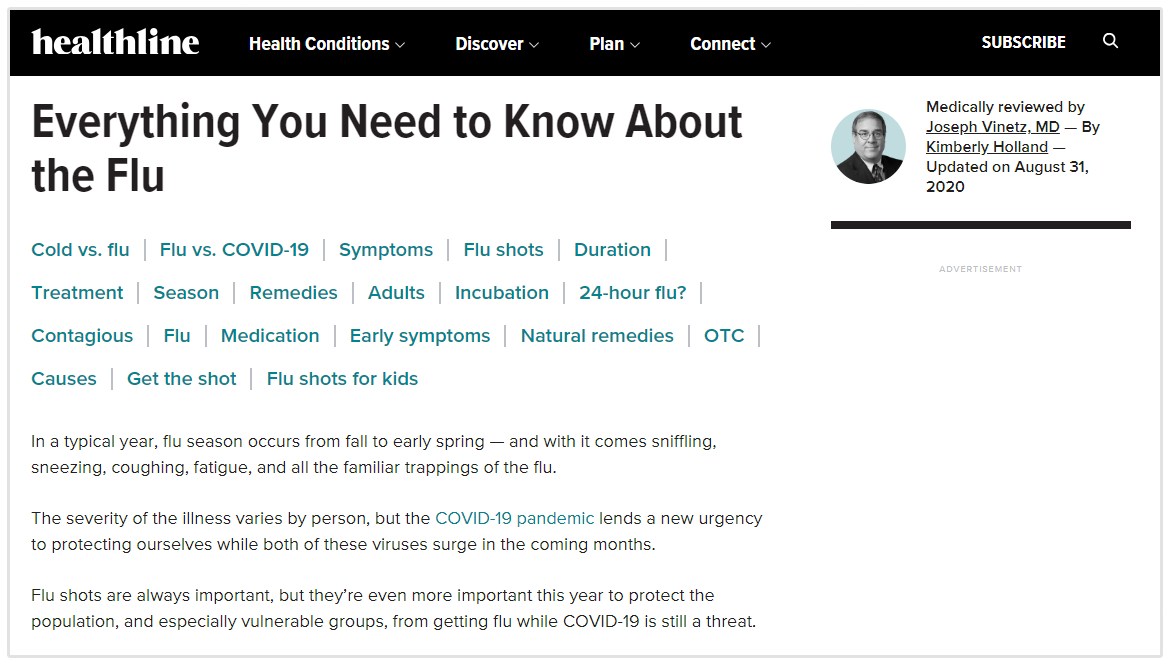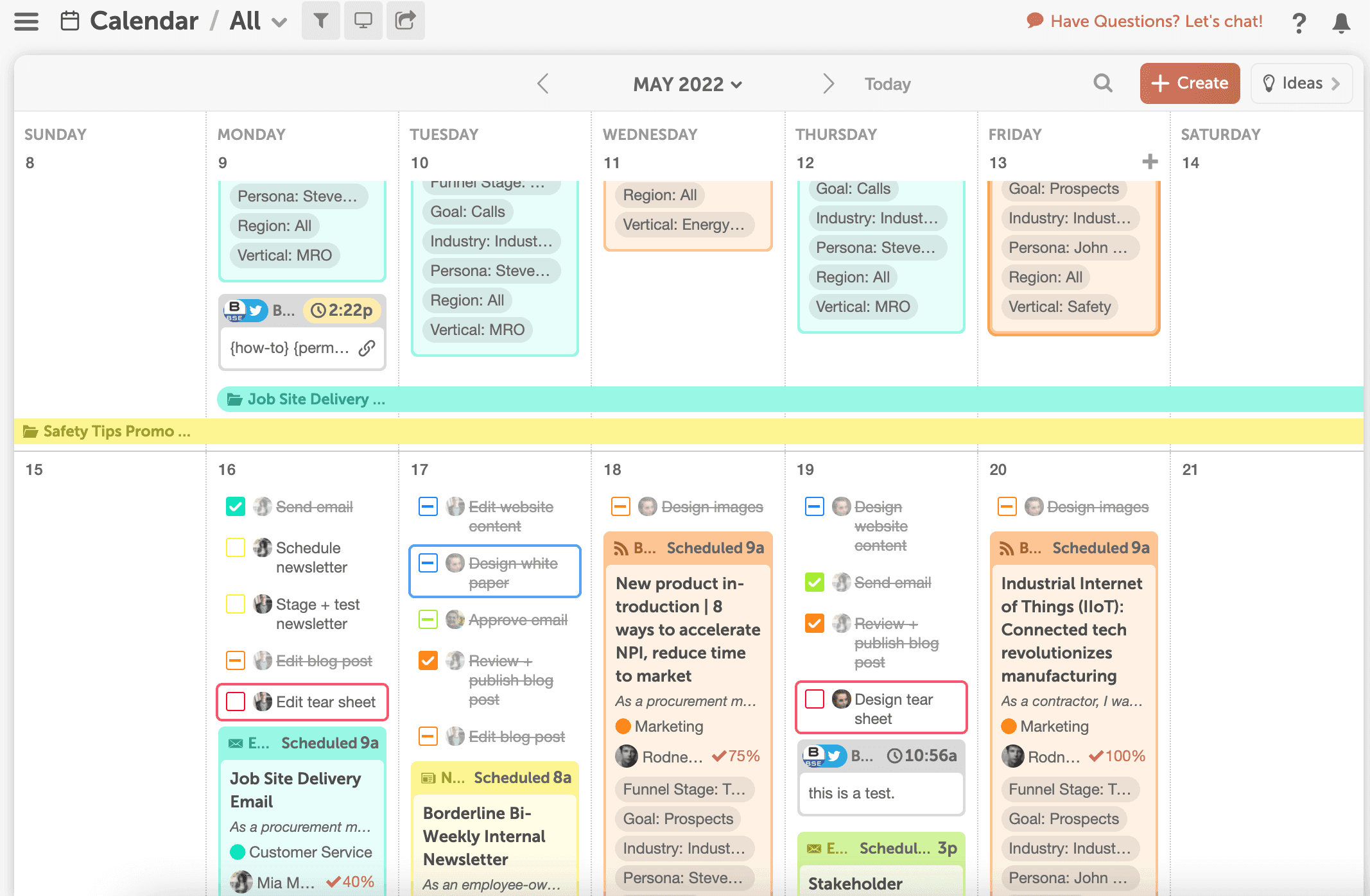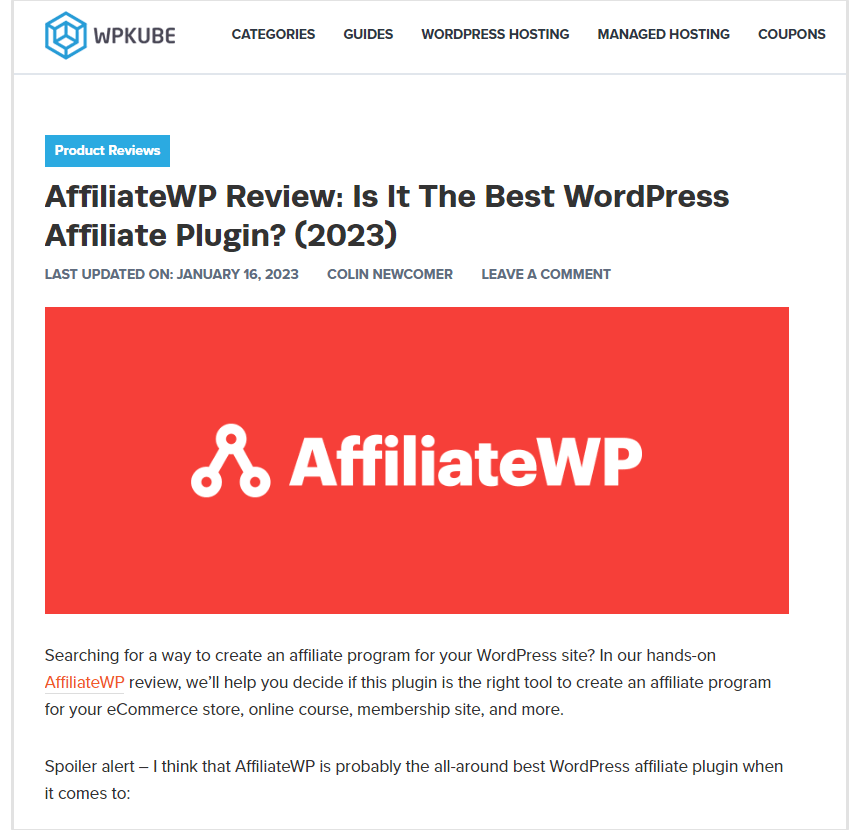
Managing a blog seems like such an easy endeavor.
The casual reader probably doesn’t realize how much work goes into creating and maintaining their favorite blogs.
Creating good blog content definitely takes a lot of work and effort.
There’s all the planning, the content production itself, the publishing and then the marketing and communications on top of that.
It’s a lot to keep up with day after day.
Beyond that, our strategies need to adapt as user preferences change and search engine algorithms are updated.
Every month you may have new marketing data to analyze and turn into effective content that brings in new leads and conversions.
From my experience running six blogs at once, I know blog management can be a headache.
You can’t let yourself and your blogging team write in the void without plans and organization, nor can you get everything done without a schedule, yet putting together such plans and schedules on a regular basis can be challenging.
This post will show you how you can manage your blog effectively.
I hope this guide will help make your life a little easier.
How to Manage Blogs that Attract and Retain Readers
As a reader of popular blogs like ProBlogger, QuickSprout and Make A Living Writing for years, I’ve noticed patterns that inspired me to become a better blogger and that can inspire you to be a content manager.
1. Develop a Laser Focus on Your Niche
The best blogs out there are aiming for very specific targets, and it shows.
They don’t stray from the focal topic.
They don’t even try to market to everybody in their niche or industry, but they pick a narrow subset of the niche and audience and focus on that.
So, if you manage a gardening blog, you’ll want to narrow your blogging advice to the needs of your audience, not the needs of generic readers covering any topic.

When it comes time to plan out your month’s post topics and publishing schedule, tackle only topics that will be very specific to people interested in gardening.
2. Produce Only Gems
If you take a look at the top blogs in your niche, you’ll notice there’s no fluff there.
Every post that appears on their blog is valuable, relevant, helpful and of a high quality standard.
Go back to the overall goal of your blog and the needs of your audience if you’re losing track of quality.
You can also turn your attention to the following fundamentals of quality blogging:
Bring Experts to the Table
Try to bring as much expertise to your readers as possible. This includes roundups, interviews, or quotes from contributors. Have a Twitter chat, invite guest bloggers, or even start your own podcast.

You can do a lot with your blog to turn it into the go-to resource for your audience.
Build Real Relationships
Follow and engage with only a handful of other names in your niche or industry. Don’t try to scatter and reach out to everyone. You’ll often see certain networks of bloggers and content marketers working with each other’s assets and communities so that they can all grow together. You can do the same. See who’s out there and interested in collaboration.
3. Keep Up with Your Schedule
Successful blogs never miss a publishing date.
If they can’t publish, they’ll have a guest writer’s contribution up for that day or, at the least, let their readers know.
Work with your blogging team to make publishing work smoothly.
Build a small stockpile of blog posts and other materials that you can publish in a pinch.
It’s a huge relief knowing that there’s always something good on hand to be published. If something goes wrong with one week’s lineup of publishing, you’ll always have something to fall back on and keep your readers happy.
8 Tips on How to Manage Blogs
The following points will show you exactly how to make things easier on you and your team while you shift your focus to the three priorities listed above.
Now, the first three points are more focused on content strategy.
It’s all too easy to become lost chasing a million different goals and marketing ideas—then nothing gets done particularly well.
Develop a laser focus with these first main tips below—and encourage the rest of your writing, editing and marketing teams to do exactly the same.
1. Know Who You’re Writing For
Popular bloggers like Kevin J. Duncan and Neil Patel stress this concept all the time, and rightfully so.
If you speak at a conference, you have to know the background of the people you’re talking to for your speech to make sense.
Can you imagine the face of your kindergarten audience if you prepared your speech on graduate mathematics? Or your graduate student audience’s reaction to a kindergarten sing-along hour?
The same happens with blogs. You need to do some prospecting.
Prospecting can also help to generate more ideas, so it is definitely a worthwhile endeavor.“Without proper prospecting before publishing the post, the blog will feel that it has no purpose.” - Sam Williamson, Scotland Shop
If your blog is aimed at increasing sales, subscriptions or followers, then you know that your ideal reader isn’t just a reader—they’re also a sales lead and potential customer.
Ask yourself:
- What does this reader need?
- What is it that makes the reader turn into an interested lead?
- What pain points does the product address?
Linda Formichelli’s post at SmartBlogger is a good place to start seeking answers to those three questions.
Your blog will only be a successful promotional tool if each blog post answers a reader’s question or need, whether they ask directly or it’s left for you to deduce from an audience analysis.
Search social media and relevant forums. What questions are people actually asking? Which ones haven’t been fully answered anywhere?
All blog posts have to address the customer’s pain points and turn to the product as the solution, without making that a sales pitch, though—your writers have to offer real advice and then link that advice to the product with an effective call-to-action (CTA).

2. Know Why You’re Writing for Those People
What does your blog exist for?
If your company sells SEO services and you want your blog to educate prospective clients on the benefit of implementing SEO for their websites, that education is your mission.
You have to know why you and your bloggers are writing for that specific audience.
Ask yourself:
- What do you want them to know?
- What do you want them to walk away with?
- Is that post an answer to a question? Or is it aimed at sharing information?
Keep your mission in sight and at the same time be mindful of your audience’s needs (see #1).
3. Use the Right Keywords
Keywords aren’t only vital for SEO purposes, they’re also what feeds your editorial calendar—they’re the gist of your topics, condensed in a few relevant words.
Don’t just aim for exact-match keywords in your content. Instead, look for natural alternatives that search engines can match to what your audience is looking for.
For example, don’t use “cheap hotels Atlanta” in your text, but “five cheap hotels for your vacation in Atlanta.”
The only place you might want to use exact match keywords at is the post URL slug (ex. example.com/cheap-hotels-atlanta).
Topical keywords should be researched before planning the editorial calendar for the new month or quarter, to ensure you also cover seasonal themes if that applies (Christmas, Spring sales, etc.).
Your blogging team can contribute with researching and pitching topics at the beginning of the period to schedule throughout the calendar.
Tools to research keywords include your web analytics suite, Google Trends, or SEOptimer’s keyword research tool.

Once you’ve produced content for your chosen keywords (which we’ll get into next) it’s equally important that you track your content’s performance for these keywords.
You can easily track your keyword rankings for your entire site using our rank tracking tool.

4. Produce Stellar Content
In a web filled with low-quality content, you really want to provide readers with information they’ll want to keep handy, reference to, and think of as the authority in the field.
Content marketing is not just marketing and selling with content—it’s also contributing to human knowledge and making that knowledge easily accessible to those who need it.
To truly contribute to this online wealth of knowledge, you must make each post worth keeping forever.
If you had to narrow down your team’s blogging goals to one single goal, quality content would stand out as the clear winner.
5. Accept Guest Posts
Your team doesn’t have to write all the posts—you can also welcome guest posts as you see fit.

But you have to be very, very picky about who you allow as guest writers.
Low-quality guest posting is still a thing, sadly.
Spell it out in your guidelines how you only green-light contributors that have something valuable to tell your readers.
Guest posts should have a place in your editorial calendar. For example, if your goal is to publish three posts per week, one of them can be a guest post.
6. Implement an Editorial Calendar
From day one you should have an editorial calendar for your blog.
There are many apps such as CoSchedule that you can use for your editorial calendar.

But what matters is that the final version of the calendar is as comprehensive as possible, including post promotion and social media marketing along with topical keywords and post deadlines.
If you and your writing team are unable to maintain regular productivity in a given month, don’t sweat it, give more room to guest posts and easier-to-write posts like roundups and interviews to keep the ball rolling.
7. Develop a Process
You and your team can’t do it all together—blogging, social media marketing, writing the posts, researching, interviewing, finding new outlets for guest posts and writing those.
Give each asset its own time slot on the schedule, and develop a process, not just an editorial calendar.
You have to find the right process for you and your team to create the content and promote the posts.
Communication with your writing team is essential to make this process work.
Nicole Maul, social media manager at Fresno-based JP Marketing, recommends that you become “a cheerleader for your contributors” and support them as people, so that “in no time you’ll be seeing content coming through the pipeline at a steady pace.”
Maul also shares: “We have created a pseudo-editorial calendar that keeps our contributors on a five-week rotation. That routine keeps the writers aware of their deadlines and understanding that they are an important part of the blog.”
Also, nobody knows your target audience and your blog’s mission better than you, so share that know-how with bloggers for them to bring out their full potential as content writers.
8. Market Every Piece of Content
And I mean even those old posts that you didn’t market thoroughly in the past. It’s time to take those, update them if needed, and market them again.
What you don’t ever want is an outdated piece on your blog.
Make sure all posts ever published at the blog you manage are still marketable and relevant to the audience.
For instance, if you’ve reviewed a plugin in the past, now is the time to update that review, and make it current.

If you use WordPress, you can use a social scheduling plugin to automate the sharing of your post across multiple platforms.
Nicole Maul adds that “another great way to share your posts is through your e-newsletter. If you have an engaged email list, then you should definitely be sharing your content with them. When you have evergreen content, blog [posts] can be utilized more than once along with your different channels. Whether that be for e-blasts, social media or training and development.”
Blog Management in Practice: The 5-point Checklist
I know this guide is quite long for being an “essential,” but I promised to make your life a little easier with it, so here’s a 5-point checklist get you on track right away (really, copy and paste this to your note-taking app for quick use):
- On the first day of each month, grab your content calendar and plan your blog posts for the next 30 days.
- If you have a writing team, have a chat and distribute blog topics among team members.
- Quality over quantity—focus on publishing fewer posts this month, but do make those high quality.
- Make at least one of this month’s posts an interview-based piece featuring an external contributor or expert.
- Market the content on different social platforms and via email newsletters.
Takeaways
The are three keys to effective blog management are:
- Develop a laser focus on your niche
- Produce only gems
- Keep up with your schedule
That’s all that really matters.
One thing at a time, you’ll overcome every challenge that comes with managing a blog and a team of writers.
Work together with your team to make the blogging engine work, and reap the benefits.







